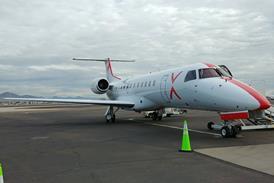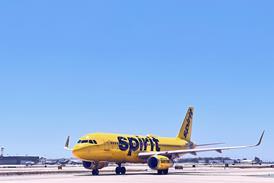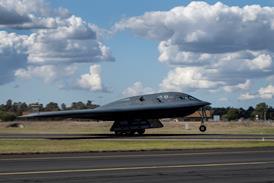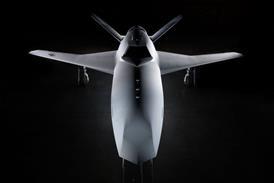PAUL LEWIS / WASHINGTON DC & GUY NORRIS / PALM SPRINGS
Suppliers to suffer if production of the twin-jet comes to an end over the next year
Boeing is expected to decide by early next month whether to discontinue production of the 717-200 in the face of a shrinking order book. The move could have major consequences for several programme suppliers particularly Rolls-Royce.
According to several industry sources, the decision to stop production could be taken in the next three weeks and an official announcement made before the end of the year. Production would be wound down over the following 12 months as the company delivered the remaining 717s still on its order book.
Boeing's formal stance on the future of the 717 has not changed. "We are still sticking to our plan to make a decision by the end of the year," said 717 brand management director Richard Wynne, at the Speednews regional conference in Palm Springs, California.
Others are convinced the 717 is all but finished. "I don't think there's anyone who doesn't think Boeing's going to put a bullet in the programme," says Pierre Chao, managing director of Credit Suisse First Boston's aerospace and defence group. Manufacturer sources say, however, that the impending decision remains "finely balanced, and could go either way". Boeing is still talking to a group of potential customers who are "close to making a decision" on whether to purchase the aircraft.

The company's 18 October announcement that it was reviewing the future of the programme "had the effect of putting some off, but it also pushed others towards making a positive move. There are some strange dynamics going on," claims the source.
Conceived by McDonnell Douglas (MDC) in the early 1990s as an advanced technology derivative of the DC-9 twinjet christened the MD-95, the aircraft was the only MDC commercial project to have survived the 1997 merger with Boeing. Its demise would be likely to mean the end of the company's commercial aircraft manufacturing activities at Long Beach in California.
Renamed the 717, the 100-seater entered service with AirTran in September 1999. Boeing holds orders for 137 aircraft of which more than 80 have been delivered. Termination now would leave the production programme well short of the minimum 300 that aircraft suppliers and customers were told would be built. The result may be that Boeing is obliged to invoke a force majeure clause to escape contractual obligations.
The 717 has several worldwide partner suppliers, some of which would be hit hard by the programme's demise. For example, Rolls-Royce's BR715 engine would then depend on the Bombardier Global Express and Gulfstream GV business aircraft for orders.
Other major 717 partners (and areas of responsibility) include: Taiwan's AIDC (empennage); Alenia (fuselage); Honeywell (avionics); Hyundai (wing); Israel Aircraft Industries (landing gear); and Korean Aerospace (nose).
Prospects of additional sales are likely to be further undermined if American Airlines, as expected, invokes a clause next year to begin returning 30 leased 717s as part of a wider deal to defer but not cancel 36 of its planned 45 Boeing 737, 757, 767 and 777 aircraft due for delivery in 2002. The airline has 28 717s in service and will take the final two aircraft shortly.
Shutting down 717 production facilities would also hit AirTran, which to date has accepted 27 of 53 aircraft on firm order and, based on its current delivery rate, will have only 40 in service by the end of next year.
Boeing has booked only six new 717 orders so far this year, including three AirTran option conversions and two additional aircraft for lessor Pembroke Capital. Midwest Express signed a purchase agreement for 20 717s, just days before Boeing management announced it was thinking of dropping the aircraft. Deliveries of the Midwest aircraft are deferred until the second half of 2003.
The immediate beneficiaries of a 717 cancellation would be Fairchild Dornier and Embraer, both of which are trying to break into the market with the similar size but lighter-weight 928JET and 190/195 respectively.
Source: Flight International




















